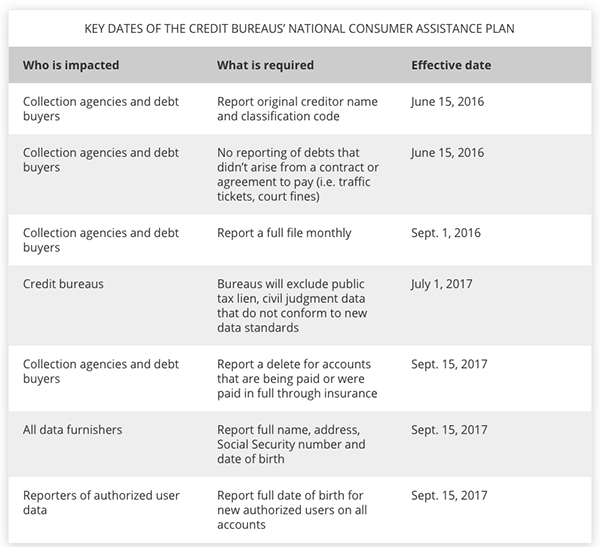
This is the next phase after the Into the Madness series, and today, Merrill Chandler gives us another history lesson by sharing something that has been happening for this entire time. He tells us exactly the rules as to what can and cannot be listed on our credit profile when doing an accuracy audit or when having someone do it for us. In the GetFundableBootcamp.com, he also talks about consumer protection and the breach that credit bureaus have, following up with a ruling called the National Consumer Assistance Plan. Merrill teaches us how to do this in the book, as well as the parameters for doing this. Here, he will also share the legal opportunities for you to verify what is accurate and what is not on your profiles.
—
Watch the episode here:
Listen to the podcast here:
The Consumer Protection I Bet You’ve Never Heard Of…But You Need To
In this episode of Get Fundable show, we’re going to be talking about what happened years ago or what’s been happening for this entire time. It’s the next phase after the Into the Madness series. I’m going to tell you exactly the rules as to what can be listed on your credit profile and what cannot when you do an accuracy audit, or you have us do one for you. In the GetFundableBootcamp.com, I teach them how to do it in the book. I teach you the parameters for doing this. We’re going to talk about the legal opportunities for you to verify what is accurate and what is not on your profiles.
Breach By Three Major Credit Bureaus
I’m going to give you a little history lesson. Over the course of these years, it’s indicative what I’m going to share with you. It tells the story of the relationship between borrowers, lenders, the credit bureaus, the regulators, and people who have done a fairly decent job of having the borrower’s back. The thing we want to talk about is the announcement was made Friday in May of 2015. Thirty state attorney generals begin a lawsuit against all three credit bureaus for breach of the common good, the public good. The bureaus have been notorious. In 1995, nineteen state attorney generals sued the credit bureaus and there have been small lawsuits over time.
The only time that the credit bureaus make a move is when either a grip of attorney generals come down on them or they get bugged to death by the persistent lawsuits that consumers do because attorneys love them, hate them. Attorneys, who have a profit incentive to go after the big data, big banking, big credit bureaus, they pursue lawsuits to the ultimate victory and we all win as a result. Let me get to this. Thirty state attorney generals came up against and without going through it, the credit bureaus buckled. The premise of the attack of this consortium of attorney generals, every one of them said that they do not take care of data. They collect data that is not accurate or is not complete.
I say it all the time there are 29 Merrill Chandler in the credit bureau databases and thirteen Merrill Chandler. How do I assign a particular account to this Merrill Chandler file, especially when there are 29 other of them? Remember, some people say, “They use your Social Security number.” Do you realize that credit bureaus cannot use your entire Social Security number as the reference point? They’re a non-governmental agency. Your lender can use it because they’re asking to identify you and you wrote that number on the application. You can use that as your relationship, but the credit bureaus are a third party. They cannot use that as part of a service string, then there’s the date of birth.
Something triggered this to come up. I was working on one of the trainings with the CreditSense advisor teams. When I got back into this and training them, I’m like, “This is an amazing show. I want to be able to go through this with you.” The bottom line is that these consortiums of 30 attorney generals reached a settlement with the three credit reporting agencies, Equifax, Experian and TransUnion. They agreed to make certain changes to their business practices. There’s an exhibit of the legal proceedings that precipitated this settlement. It’s a statement of facts by the credit bureaus. Over and over, they say, “We admit no wrongdoing in the ordinary course of business. We’re subject to governmental or regulatory examinations, which the outcome is unpredictable in the view of the inherent unpredictability of litigation and regulatory matters where the damages sought are substantial.”
Tax liens are one of the things that were summarily removed from everybody's credit profile because the four major indicators of those tax liens are not being transferred to the credit bureau. They can't report all the accurate data that would make a… Click To TweetEven though we have reserves for litigations, it comes up against our budgets to have all of these lawsuits go through this. It’s called Exhibit 99.2 in this proceeding. They say without admitting any wrongdoing, we’ve agreed to a settlement of this matter. The court approved the agreement earlier in 2008 or 2009, but they also mentioned tons of these documents. It shows how many times they admit $17 million in payouts, $51 million in payouts. They’re showing all the reasons why they are not admitting guilt, but they’re willing to not go up against all of the 30 state attorney generals. This link shows you the precursory lawsuit, legal proceeding history leading up to why the bureaus buckled.
We’re going to go over what bureaus look like and they’re beautiful. That’s why I said this might be in part Into the Madness series because it’s the next logical step for after you order your credit ports. After you know how to read them, you already know what should or shouldn’t be there. It might be standalone because it is powerful as what positive movements that even the giants, even the titans of the industry, do have to be accountable to the regulators and to the public. One of the big reasons why this came to be is that in a CFPB, which is the Consumer Financial Protection Bureau, they acknowledged that 76% of the 185,000 profiles that were reviewed from the credit bureaus had incorrect information and this could lead to denials of credit.
That’s a great sample size, 185,700 reporting complaints and 76% of them were related to incorrect information. Big things happen. First of all, no tax liens. This was back in 2018, but they had announced it in 2015 to 2016 through the litigation and the settlement process. They said that it would be the summer of 2018, but during 2018, we prepared our clients, our students, everybody in our universe. We told them that there are going to be some improvements in your profiles. Tax liens are one of the things that were summarily removed from everybody’s credit profile because the four major indicators of those tax liens are not being transferred to the credit bureau. They can’t report all the accurate data that would make a tax lien mine or make a tax lien yours.
If it doesn’t have collections, civil judgments, bankruptcies and all data furnishers were going to go through what the impact is for all of these. Some of these began to be effective in 2016, 2017 and somewhere in 2018. The thing is that may seem like several years ago, but the problem is that there are still credit bureaus and consumer reporting agencies that do not include all of this data. Data points are your business. If they don’t have these things, they reflect negatively on you. I’m giving you a heads up about what your rights are under the Fair Credit Reporting Act and under this ruling called the National Consumer Assistance Plan.
National Consumer Assistance Plan
Notice that they’re going to get their asses sued. What do they do? They come up with a National Consumer Assistance Plan and it comes from the settlement between the major bureaus and 30. For all, I know, more people joined after the fact. This does not matter on your myFICO report. It does not matter because myFICO is pulling data, the raw data from the three credit bureaus, Experian, TransUnion, Equifax, then score it. Your myFICO report is about scoring the available data. This requires you go to the Into the Madness series 3, 4 and 5 where you’re getting, reviewing your consumer disclosure files, the raw data files from each of the bureaus.

This is what can and cannot be listed and what the requirements are. Collection agencies and debt buyers, what you have to have is if it doesn’t report what’s required to be on the report is the original creditor name and the classification code. It could be for health purposes, a cell phone bill, a service provider, their classification codes that indicate what type of the original creditor is. If it does not have the original creditor and it does not have a classification code, then you get to include it in your accuracy audit as we’ve discussed in the Bootcamp, in my book and in previous episodes of the podcast.
If they do not have the original creditor name and a classification code, the credit bureaus must not report that. Include it in your audit and send those findings to the credit bureaus and ask for their removal. You need to take screenshots or pictures or include the documents that show that those things are not included. This is a change. Collection agencies and debt buyers cannot report debts that didn’t come from a contract or an agreement to pay. You can’t have collections on traffic tickets, court fines. I’m even going to push the envelope and say, “If there is not a promise to pay, if you receive a bill that was not part of an arrangement, they cannot record that as a collection on your credit profile.” Most collection agencies and debt buyers in the past would buy and download a complete file. They’d pay whoever it is. Let’s say they’d pay Chase, $0.10 or $0.20 on the dollar and get a download of all of these people who were in charge off or delinquent mode.
The credit bureaus would list them once and never list them again. Collection agencies and debt buyers would literally put it on a credit report and never have to do anything. As a result of this settlement, they have to report the full file every single month, which includes the data points that I’m going to share with you. Every collection agency had to either get out of the business or start reporting monthly on the status of every collection account. In my perspective of many years of this, that’s good news because you’d do a validate and verify. You can’t do an audit of a file that’s three years old, but there’s no reporting data. Having to report and if they can’t report it every month, it doesn’t get to be put on your collection account. That’s why back in 2017 and 2018 when all these were being enacted or executed, there were millions of collections and tradelines and judgments were all being removed from credit files.
For credit bureaus, bureaus will exclude public tax liens, civil judgment data that do not conform to the data standards we’re going to be talking about. If the data is not there when they receive it from the public record, that’s usually LexisNexis, the credit bureaus have to exclude it. If the data is coming to them for public tax liens and civil judgments, if that is coming to them and they don’t have all four data points, they have to reject the data from coming in and can’t put it on your file. Back to collection agencies and debt buyers, they have to report and delete accounts that are being paid within or paid in full through insurance. One of the things that were horrible, let’s say you go to the doctor and they charge you $5,000 and your copay was $500. You paid your $500, but then it took 1, 2, 3 or 6 months for the insurance to pay it off.
Most collection agencies that were getting that $4,500, after the copay was borrowed, they would say, “You owe us $4,500.” It would be sent to collections. They cannot do that. They cannot report even accounts that are being paid or were paid through insurance. Those are completely taken off, a whole new data requirements are necessary. If you are in the process because it says, “Being paid or were paid in full through insurance,” they can’t report those. If you are in the process of working with your insurance company and you get a collection, but you show relationship with the insurance company that you’re in the process of reconciling, all of this must be deleted. If it was paid in full, it has to be deleted because it was never a collection. It was the process of getting through the insurance claim.
Being an authorized user helps with your score, but it doesn't do a thing #GetFundable Click To TweetReporting Structures
Here’s the next one. It says in the report all data furnishers. A data furnisher is any organization that reports account information. It could be trade lines like credit cards, installment loans or reports public records or reports collections. There are three types of reporting structures. One is called tradelines and those are your revolving installment loans. Then there are collection accounts and then there are public records. The public records come from the courts, the judgment or the lien or the bankruptcy. Every data furnisher out there has to report the full name, address, Social Security number and date of birth. Those four data points. When they say the full name, that’s where you need probably some high-performance coaching on building your PBID and then auditing for the PBID and then you send the accuracy audit and the disputes to the bureaus.
Full name, address, Social security number and date of birth, if they do not report all of those, they cannot report that. If something ends up on your consumer’s disclosures, remember you’re working all three consumer disclosures. If all of that information is not there, if it doesn’t synchronize with the PBID that you’ve chosen, and sent to your positive reporting lenders, then those have to be removed. The reason why this whole opportunity came up because I was doing training with my accuracy audit team at CreditSense. What’s hilarious is one of the data furnishers that are not well known is LexisNexis. Back in the day, courts or credit bureaus used to collect data from the courts. They would report that data as they collected it. If you’ve been into the court data, it’s not always pretty. There are many things that are missing. It’s handwritten, interpretable, but as early as 2000, there was a range of what started then became full fruition, but credit bureaus started receiving the data from LexisNexis. LexisNexis collects it directly from the courts and public records and then reports it to the credit bureaus.
Credit bureaus are receiving data from a third party, not from the data source, but the furnishers and data furnishers fall under this rule. We were reviewing the LexisNexis consumer disclosure, because LexisNexis has raw data files, like any consumer reporting agency legally obligated to do. We were going through LexisNexis. I was teaching my team how to look at every single thing that’s mentioned, if it doesn’t contain all four data points, name, address, Social Security number, date of birth on each line. You can’t have data, a Social Security number and a date of birth and all of them have different addresses and blanks. Those don’t get to be reported. In that accuracy audit, you get to send those findings to LexisNexis. When you reconcile that data furnisher, then new data gets reported or the data is then removed from the credit bureaus because LexisNexis is the data furnisher. They have to obey the same rules that the credit bureaus do when it comes to accuracy and filings. The section says, “All data furnishers have to do this thing, all four of those.”

Consumer Protection: A data furnisher is any organization that reports account information.
How to do that with your PBID? Go to go to the Bootcamp. Grab my book. Go to GetFundableBook.com. Go there and learn how to do these in the Bootcamp. We have no auditing materials and you can send the findings to the credit bureaus dismissing what shouldn’t be reported. You get that as part of the gold and silver memberships or gold and silver event pricing. Make sure your data is accurate. The last one is reporters have authorized user data. These are only credit card issuers. If you report authorize user data, you have to include a full date of birth for any and all authorized users on the account or it can’t be reported. That date of birth is designed for accuracy to separate the cardholder, the individual owner of the account and the authorized user. If it doesn’t have the date of birth for that new authorized user, you can’t put it on the credit report. That helps us when we’re doing an audit because ultimately, authorize users are relatively meaningless as the book.
As the Bootcamp says and as I have in previous episodes, “Being an authorized user helps with your score, but it doesn’t do a thing.” It punishes your fundability™. I don’t care about scores. I care about whether or not a lender will give you money. Good news, over 2016 to 2018, while this was all being implemented, people’s credit scores were improving. The thing for us, for fundability™, is we want accuracy in reporting. If we’re pushing these limits, we’re looking at our consumer disclosure files and we’re finding out where they do not meet these regulations, accuracy is everything. You’ve got to get them to stop reporting these on the credit bureaus so that when FICO filters that data with its scoring software, you are fundable. I hope you have as much fun as I do reading this. If you are literally bingeing this, then keep going because we have many things to cover that continue to impact you to make you a professional borrower instead of a rookie borrower.
Important Links:
Love the show? Subscribe, rate, review, and share!




